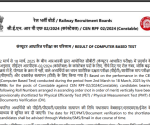IIT Bombay vs IIT Madras: Where India’s premier engineering institutes stand in QS World University Rankings 2026 – Times of India

As Indian institutions continue to climb global academic rankings, two names remain at the heart of the country’s higher education rise—IIT Bombay and IIT Madras. The QS World University Rankings 2026 has once again placed both these institutions within the top 200, highlighting their academic influence, research prowess, and global potential. But while they share the same legacy, their performances reflect two distinct trajectories.While IIT Bombay is ranked #129, IIT Madras trails at #180. On the surface, this difference of 51 positions might seem significant, but the underlying data reveals a story of contrasting strengths and emerging academic identities.
IIT Bombay vs IIT Madras: A parameter-wise comparison
Here is a detailed comparison of how these elite engineering institutions have performed on the global stage.
Academic reputation and employability: Bombay in the lead
IIT Bombay continues to be India’s most recognisable brand in global academia. Its academic reputation (73.3) and employer reputation (96.7) position it as a trusted institution among both international scholars and recruiters. The institute’s long-standing alumni presence across industries and academia globally contributes to this reputation.IIT Madras, while behind in these areas, still boasts a strong employer reputation (85.8), reflecting increasing recognition in Southern Asia and emerging tech sectors. However, its academic reputation (56.8) indicates a more regional visibility that is yet to scale globally.
Research impact : Madras surpasses in citations
Despite Bombay’s edge in reputation, IIT Madras outshines in research impact. With a Citations per faculty score of 90.2, it surpasses Bombay’s 82.9, suggesting a higher influence of its research outputs. This aligns with Madras’s growing reputation in energy systems, sustainable technologies, and AI research. Madras also holds a 31 global rank by subject, further reinforcing its subject-specific research depth.
Employment outcomes : Bombay’s strength
The most striking contrast lies in employment outcomes. IIT Bombay scores a robust 72.6, while Madras lags behind at 45.8. This points to stronger post-graduate placement, higher mobility, and alumni success at Bombay, likely driven by its industry-linked curriculum and location advantage in Mumbai’s tech ecosystem.
Global diversity: Madras leads in student mix
When it comes to internationalisation, both institutions have work to do. However, IIT Madras has a better international student ratio (3.2%) and a much higher diversity score (7.4) compared to Bombay’s 1.5. It also hosts more international students in absolute numbers (147 vs 94), indicating a more active engagement with global postgraduate talent.Still, both institutions remain far behind global leaders in attracting international faculty and students, a reflection of systemic challenges in India’s academic mobility and outreach.
Sustainability and global networks
Bombay continues to push forward in sustainability, scoring 75.2. While IIT Madras has attained a 73 score globally in the QS Sustainability Ranking, its rising research in renewable energy, clean tech, and climate innovation signals a growing commitment to this domain. In international research collaborations, both institutes are closely matched, 46.6 for Bombay and 45.6 for Madras.
















